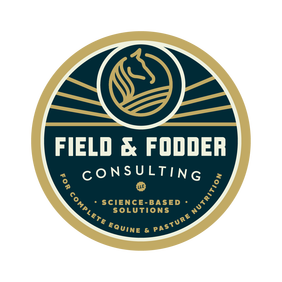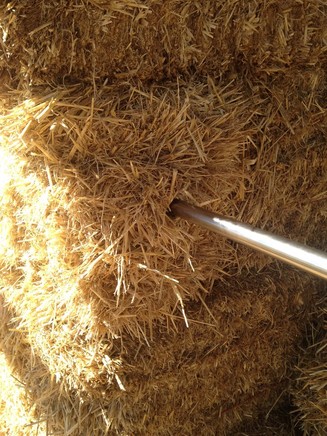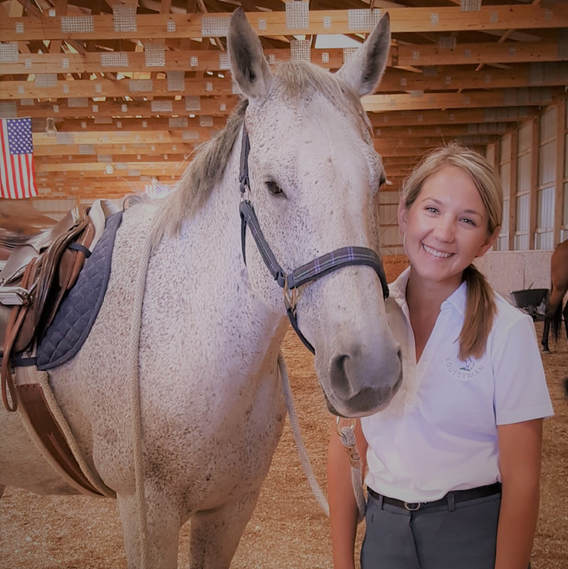|
Why should you test your hay?
Dr. Emily Glunk Meccage For many livestock and horse owners, testing your hay is not something that is done on a regular basis. And in many cases, most will rely on their animals’ performance to gauge how feeds are meeting their needs. This can work for many people, but what about in the case of a performance horse, or a broodmare, or a horse with metabolic or other health issues? If those horses start to have decreased performance, that can have significant implications on the overall well-being of the horse, including decreased performance in the show ring, problems with gestation and foaling, or prolonged disease incidence. Instead of just adding more grain or supplements to your daily feeding, it is usually more cost-effective and beneficial to first know exactly what your horse is getting from the hay and pasture.
1 Comment
I am Dr. Emily Glunk Meccage, co-owner and consultant at Field and Fodder Consulting, LLC. In addition to working at Field and Fodder, I am also the Extension Forage Specialist and Assistant Professor at Montana State University in Bozeman, MT. Part of that position entails coordinating and conducting research on best forage management practices, from fertilizing and grazing recommendations, to appropriate species for producer needs. I get to travel all over the state and region, organizing and speaking at workshops and field days about forage production and management.
My passion is, and always has been, equine nutrition and management. Growing up, I competed in hunter/ jumpers as well as dressage. I also was a member of the riding team at Penn State University for a few semesters, where I completed my B.S. degree in Animal Bioscience. While there, I was fortunate to start my career in research working on two projects with Dr. Burt Staniar: one evaluating the palatability and digestibility of Teff hay when fed to horses, and another evaluating maternal diet impacts on foal performance through the first 18 months of life. From there I was hooked, and knew I wanted to go to graduate school for equine nutrition. After graduation, I started my M.S. degree at North Carolina State University working with Dr. Paul Siciliano. My thesis research involved evaluating horse dry matter intake rates while at pasture. The results were fascinating; horses changed their intake rates based on how long they were allowed to graze. In short, if horses knew they were only allowed to graze for a short period of time each day, they would speed up how quickly they ate. Dr. Siciliano used results from this research and several other projects to create an equation to estimate intake rate based on hours of turnout, which we use frequently in our ration balancing. For fun, I was also able to compete for two semesters on the NC State Dressage Team, allowing me some much needed time in the saddle in between classes and research. While at NC State, I was also fortunate to start learning more about pasture and forage management, which I found extremely interesting. When searching for an advisor and school for my PhD, that was one of the important factors I considered. I was lucky to find a perfect match at the University of Minnesota, working under Dr. Krishona Martinson, the Equine Extension Specialist, as well as Dr. Craig Sheaffer, Forage Agronomist. My research at U of M evaluated forage utilization by equines, both while grazing and consuming hay. One of my projects evaluated how effective grazing muzzles were at decreasing intakes at pasture, and the other two evaluated the effectiveness of slow-feed hay nets as well as their impact on glucose, insulin, and cortisol response. Since starting at Montana State University in 2014, I have had the opportunity to speak around the region several times regarding forage management specifically for horse owners, among many other topics. I currently have four horses; my 3 year old Dutch Warmblood Django (out of my mare Khenya), a 16 year old Quarter Horse Jimmie, who found a new career as a jumper after a lifetime as a trail horse, my auction pony Penelope that my mother bought out of an auction pen in New Jersey, and my mini donkey Donk, who I will be posting about his weight loss journey in the upcoming months. Along with the horses, my husband Ryan and I have two rescue pups, Milly and Tucker, and two cats, Salty (aka Hell Cat) and Harry, who love to keep us entertained. I am very passionate about horse management and nutrition, as well as hay and pasture management. Together with Cassie, who worked on her M.S. degree with Dr. Siciliano at the same time, we realized our passion and experiences could really help horse owners in optimizing their horse and pasture management. We are both very excited to have the opportunity to work with you, and we look forward to hearing from you soon! |
Archives
July 2018
Categories |



 RSS Feed
RSS Feed